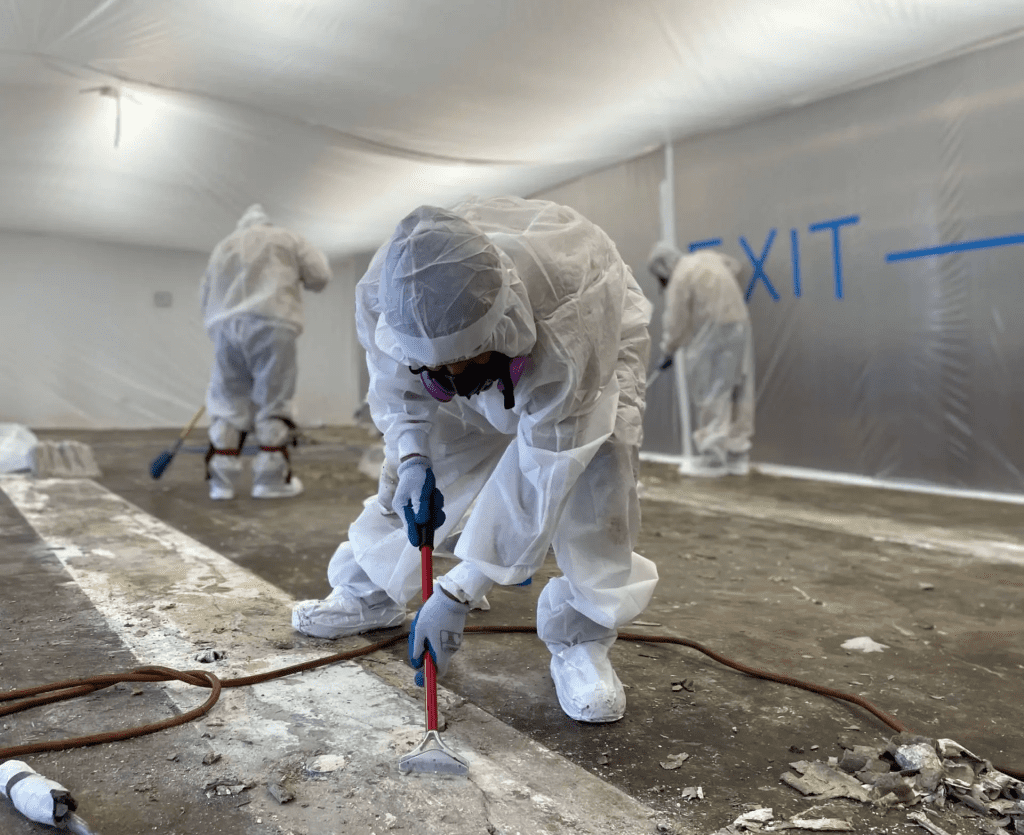If your home was built before the 1980s there’s a good chance that some materials inside it may contain asbestos a hazardous mineral once used for insulation, flooring, roofing, and pipe wrapping. When these materials are disturbed, asbestos fibers can become airborne and pose serious health risks.
Professional asbestos removal (also called abatement) is the safest way to handle contaminated materials, but before certified contractors arrive, homeowners must take a few important steps to ensure a safe, smooth, and compliant process.
In this article, we’ll walk you through exactly how to prepare your home for asbestos removal from inspection to cleanup so your property and family stay protected.
1. Schedule a Certified Asbestos Inspection
The first step is always testing and inspection. Don’t assume your home contains asbestos hire a certified asbestos inspector to collect samples and send them to an accredited laboratory.
They’ll identify whether materials like floor tiles, ceiling insulation, pipe wraps, or siding contain asbestos. If asbestos is found, you’ll receive a detailed inspection report outlining:
-
The type and condition of asbestos materials
-
Their exact locations
-
Recommended next steps (repair, encapsulation, or removal)
💡 Tip: Never attempt DIY asbestos testing. Even small disturbances can release harmful fibers.
2. Choose a Licensed Asbestos Abatement Contractor
Once asbestos is confirmed, select a state-licensed asbestos abatement contractor. In New York and Long Island, contractors must be certified under Code Rule 56 and EPA’s NESHAP guidelines.
When choosing your contractor:
-
Ask for their license number and insurance.
-
Request a written plan outlining containment procedures and safety measures.
-
Confirm that they’ll notify the local or state agency (like the NY Department of Labor or NYC DEP) before starting work.
Hiring an unlicensed company can result in fines — and more importantly, unsafe conditions for your household.
3. Understand the Removal Plan and Timeline
Before work begins, your contractor should brief you on:
-
Project duration: Most residential asbestos jobs last 1–3 days, depending on the size.
-
Work areas: Rooms or structures to be sealed off.
-
Containment setup: Plastic sheeting, negative air pressure machines, and HEPA filtration.
-
Access restrictions: Areas you must avoid during the process.
Review this plan carefully and ask questions. Clear communication avoids surprises and helps you prepare your home properly.
4. Remove Personal Belongings and Furniture
Before asbestos work begins, clear the area as much as possible. Remove:
-
Furniture, decorations, rugs, and curtains.
-
Electronics or valuables that could collect dust.
-
Food items, dishes, and kitchenware (if kitchen work is involved).
If something can’t be moved, your contractor will cover it with 6-mil plastic sheeting and seal it tightly.
🚫 Do not move or clean items after containment setup — once the area is sealed, let professionals handle everything.
5. Turn Off HVAC Systems
Airflow spreads asbestos fibers quickly. Shut down all:
-
Heating, ventilation, and air conditioning (HVAC) systems
-
Ceiling fans and vents
-
Window units
Contractors may also seal vents to prevent contamination from entering your ductwork.
After removal, your system should be cleaned or have filters replaced before reuse.
6. Plan to Leave During the Abatement Process
Even though licensed contractors use strict safety protocols, it’s best for homeowners and pets to stay elsewhere during asbestos removal.
Reasons to leave include:
-
Limited access to essential rooms (like bathrooms or kitchens)
-
Noise from equipment (HEPA filters, vacuums, air movers)
-
Health safety — better to avoid accidental exposure
Plan temporary accommodation (a hotel or family home) for the duration of the project plus 24 hours afterward to allow air clearance testing.
7. Notify Neighbors (Optional but Courteous)
If you live in an apartment, shared housing, or close community, it’s considerate to inform neighbors about scheduled asbestos work.
Contractors follow strict containment laws, but notifying neighbors prevents misunderstandings or concerns about air safety.
8. Ensure Proper Containment Setup
Before removal begins, your contractor will:
-
Seal the work area with heavy plastic sheeting
-
Set up negative air pressure to prevent fibers from escaping
-
Install decontamination chambers for workers
-
Post warning signs such as “Danger: Asbestos Hazard – Authorized Personnel Only”
You don’t have to set up anything yourself, but confirm that containment is installed before work starts — this is your main line of protection.
9. Prepare for Utilities and Access
Make sure:
-
Electrical outlets in work areas are functional (for equipment)
-
Water supply is available (for wetting materials and cleanup)
-
Driveways or entryways are clear for equipment and disposal vehicles
Coordinate with your contractor to identify safe access points for their team and waste transport route.
10. Post-Removal: Air Clearance Testing
After removal, independent air monitoring must verify that asbestos fiber levels are below regulatory limits before you re-enter.
A certified air monitor or industrial hygienist performs tests using high-sensitivity pumps and lab analysis.
Only after passing clearance should containment barriers be removed and your family return home.
11. Cleaning and Re-Entry Procedures
Once clearance is approved, your contractor will:
-
Remove containment materials carefully
-
Clean all surfaces using HEPA vacuums and damp wipes
-
Dispose of waste in sealed, labeled bags to approved facilities
Before moving items back in:
-
Wipe furniture and hard surfaces
-
Launder washable fabrics
-
Replace HVAC filters
You’ll then receive a final clearance certificate or report confirming compliance with state and federal regulations.
12. Keep All Documentation for Your Records
Always keep copies of:
-
Asbestos inspection reports
-
Removal permits and notifications
-
Air clearance certificates
-
Waste disposal manifests
These documents protect you from liability and are useful if you plan to sell or rent the property later.
13. Long-Term Prevention and Maintenance
After removal, take preventive measures to keep your home safe:
-
Regularly inspect for leaks or damage that might expose hidden materials.
-
Avoid sanding, drilling, or scraping older surfaces unless tested.
-
Use professionals for any future renovations.
Maintaining awareness and documentation helps ensure your home remains asbestos-free for decades.
Conclusion
Asbestos removal is a critical but manageable process when done correctly. By preparing your home ahead of time, hiring certified professionals, and following safety protocols, you protect not only your property but also the health of everyone who lives in it.
Whether you’re in New York, Long Island, or anywhere with older housing, taking proactive steps can make asbestos removal smooth, safe, and fully compliant with 2025 environmental regulations.
If you suspect asbestos in your home, don’t wait schedule a professional inspection today and start your removal plan with confidence.




